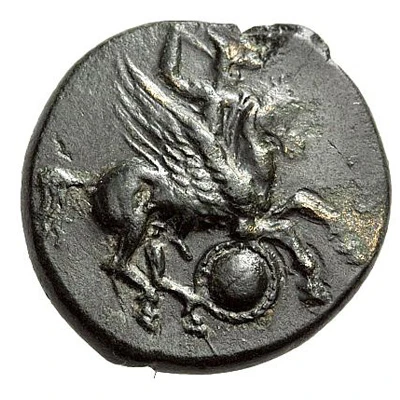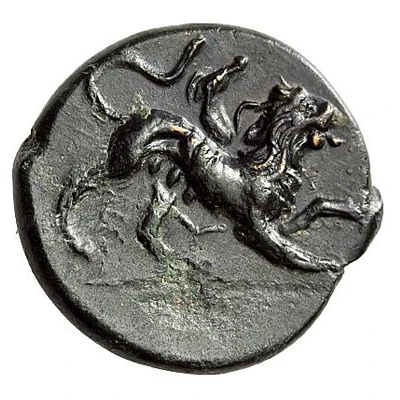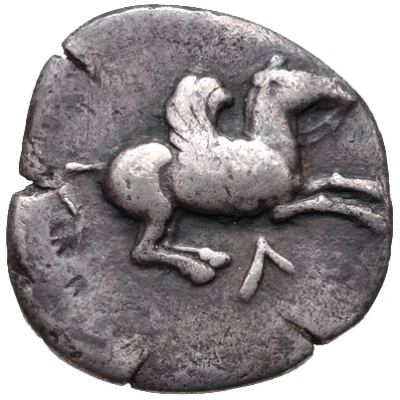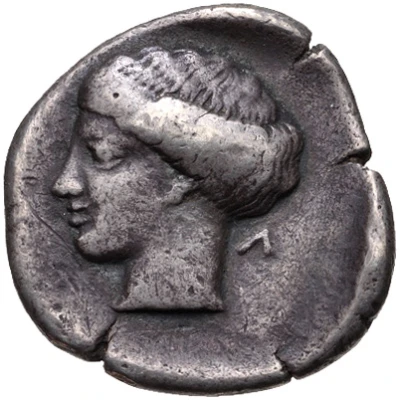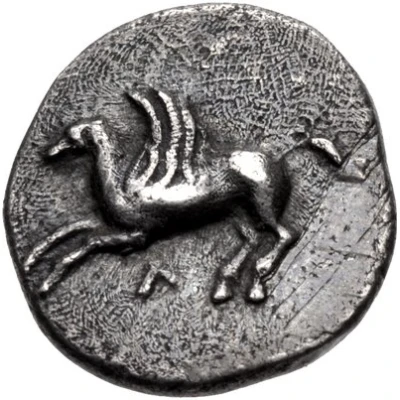
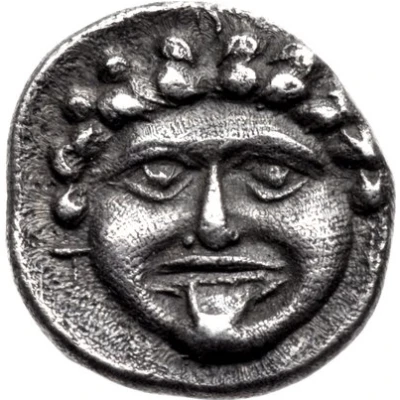

© Classical Numismatic Group, Inc.
Trihemiobol 400 BC - 375 BC
| Silver | 0.67 g | 9.0 mm |
| Issuer | Leukas (Akarnania) |
|---|---|
| Type | Standard circulation coin |
| Years | 400 BC - 375 BC |
| Value | Trihemiobol (¼) |
| Currency | Drachm |
| Composition | Silver |
| Weight | 0.67 g |
| Diameter | 9.0 mm |
| Shape | Round (irregular) |
| Technique | Hammered |
| Orientation | Variable alignment ↺ |
| Demonetized | Yes |
| Updated | 2024-10-09 |
| Numista | N#143914 |
|---|---|
| Rarity index | 97% |
Reverse
Facing gorgoneion sticks out its tongue
Interesting fact
The Trihemiobol coin from Leukas (Akarnania) was used as a form of currency in ancient Greece, specifically in the 4th century BC. Its name "Trihemiobol" comes from the Greek words "tri", meaning three, and "hemiobol", meaning a half-obol, which refers to the coin's value being equal to three half-obols. This coin was made of silver and weighed approximately 0.67 grams. Despite its small size and value, the Trihemiobol played an important role in the ancient Greek economy, as it was widely used for everyday transactions and was a symbol of the wealth and prosperity of the city-state of Leukas.
